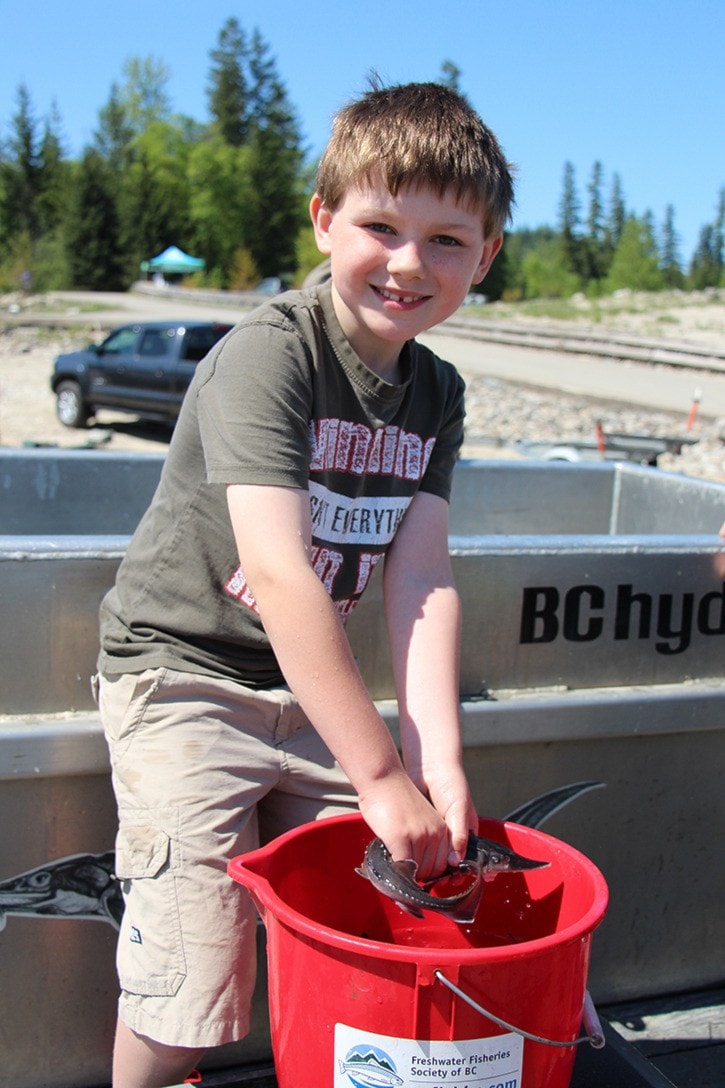Contributed by BC Hydro
About 120 elementary students from Revelstoke were at Shelter Bay on Thursday, May 9, for the annual juvenile white sturgeon release.
“This is a great way to really reach out, touch, and help an endangered species – quite literally,” says Gerry Nellestijn, chair of the Community Working Group of the Upper Columbia White Sturgeon Recovery Initiative (UCWSRI). “The fish look – and feel – like creatures from prehistoric times; in fact they have largely remained unchanged for 175 million years. By getting the community, particularly the younger generations, involved, and increasing awareness, we feel there are much better chances for the survival of this population.”
The release event, which involved both local elementary school students and the public, was organized by Fish and Wildlife Compensation Program, (a partnership between BC Hydro, the Province of B.C., and Fisheries and Oceans Canada), with support from BC Hydro, Revelstoke Rod and Gun Club, the Freshwater Fisheries Society of B.C. (FFSBC), and FortisBC.
Approximately 6,000 ten month‐old juvenile white sturgeon, raised by FFSBC in its Bull River hatchery in the East Kootenay through a program funded by BC Hydro, will be released; they are produced from wild adults, caught last June.
The juvenile sturgeon were larger compared to previous years, and larger compared to sturgeon released elsewhere in the Columbia system. The average weight of the fish released at Shelter Bay is greater than 150 grams; this compares with an average weight of 85 grams for those fish recently released in the Columbia River below Hugh Keenleyside Dam. The larger weight will determine if the larger body size improves survival of the sturgeon through the first winter following the release.
“We think that there are only about 75 adults left in the Arrow Lakes Reservoir, all relatively old,” added Nellestijn. “Therefore this Conservation Aquaculture Program is a critical stop‐gap measure to save this population. Currently there is virtually no natural recruitment taking place – that is to say little survival of the eggs through the larvae stage, and growing into juveniles and adults.”
The Initiative is a partnership of more than 20 stakeholders from government, First Nations, industry, community and environmental organizations. Sturgeon recovery includes research to determine the causes of decline, release of hatchery‐reared juveniles from wild stock adults, restoration of habitat, and monitoring and management of water flows.
